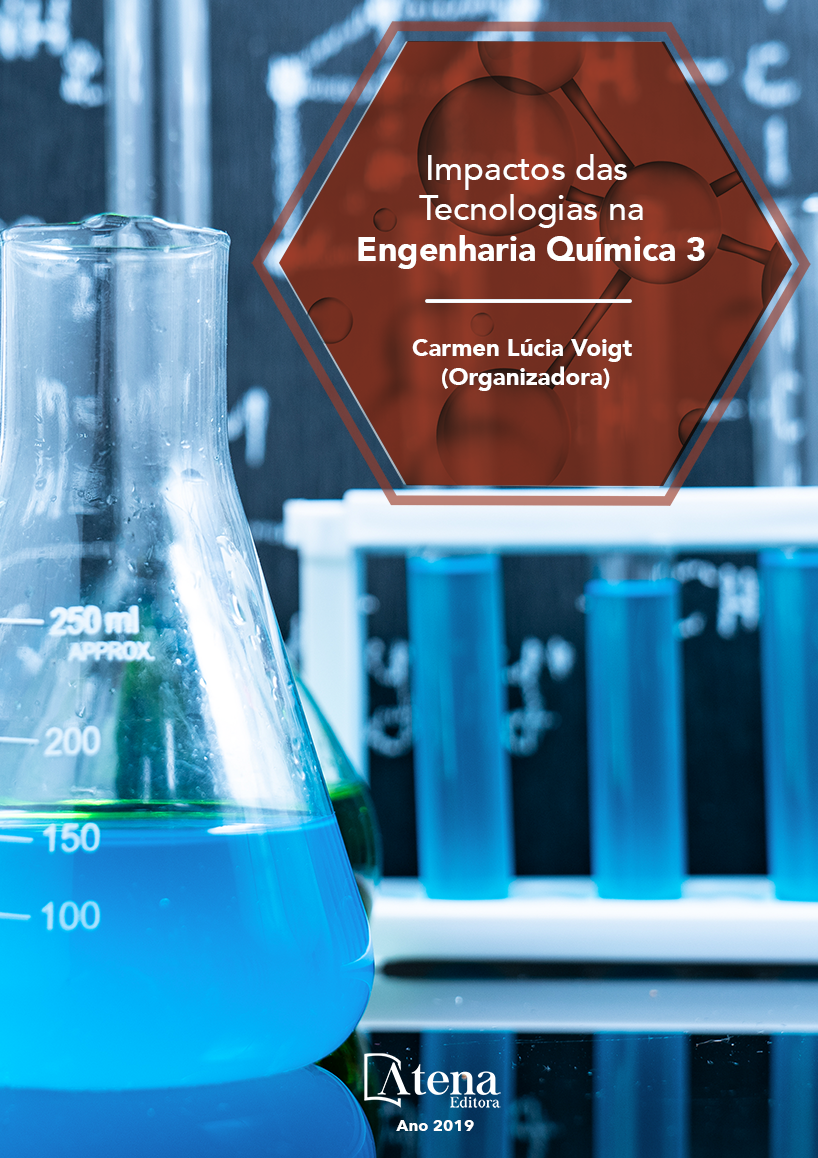
DEGRADAÇÃO FOTOCATALÍTICA DE RODAMINA B COM UM CATALISADOR À BASE DA BIOMASSA PORONGO: EFEITO DA DOPAGEM COM FERRO
O presente trabalho tem por objetivo
avaliar a atividade fotocatalítica da biomassa
residual de porongo (Langenatia siceraria) in
natura e o efeito da dopagem com Fe+3. As
amostras foram caracterizadas por porosimetria
de nitrogênio, potencial zeta, análise elementar,
DRS e PCS. O corante rodamina B foi a
molécula-alvo escolhida para avaliar a atividade
fotocatalítica sob radiação UVA (365 nm) e
visível. O catalisador Fe-porongo apresentou
melhor atividade fotocatalítica, com uma
degradação de 50,33 % (k = 0,0059 min-1, sob
radiação ultravioleta) e de 43,23 % (k = 0,0046
min-1, sob radiação visível) após 120 min de
reação, enquanto o TiO2 comercial obteve uma
degradação de 50,02 % (k = 0,0057 min-1) e 42,14
% (k = 0,0043 min-1) nas mesmas condições e
radiação UV e visível, respectivamente.
DEGRADAÇÃO FOTOCATALÍTICA DE RODAMINA B COM UM CATALISADOR À BASE DA BIOMASSA PORONGO: EFEITO DA DOPAGEM COM FERRO
-
DOI: 10.22533/at.ed.31919010432
-
Palavras-chave: Lagenaria siceraria; corantes; fotocatálise heterogênea.
-
Keywords: Lagenaria siceraria; dyes; heterogeneous photocatalysis.
-
Abstract:
The work aims to evaluate the
photocatalytic activity of the residual biomass
of porongo (Langenatia siceraria) in nature and
the effect of doping with Fe+3. The samples were
characterized by nitrogen porosimetry, zeta
potential, elemental analysis, DRS and PCS.
Rhodamine dye B was the target molecule
chosen to evaluate the photocatalytic activity
under UVA (365 nm) and visible radiation.
The Fe-porongo catalyst showed better
photocatalytic activity, with a degradation of
50.33% (k = 0.0059 min-1, under ultraviolet
radiation) and 43.23% (k = 0.0046 min-1, under
irradiation visible) after 120 min of reaction,
while commercial TiO2 showed a degradation
of 50.02% (k = 0.0057 min-1) and 42.14% (k =
0.0043 min-1) under the same conditions and
UV and visible radiation, respectively.
-
Número de páginas: 15
- Mariéle Schaedler Nascimento
- Matheus Severo Schalenberger
- Joana Bratz Lourenço
- William Leonardo da Silva


